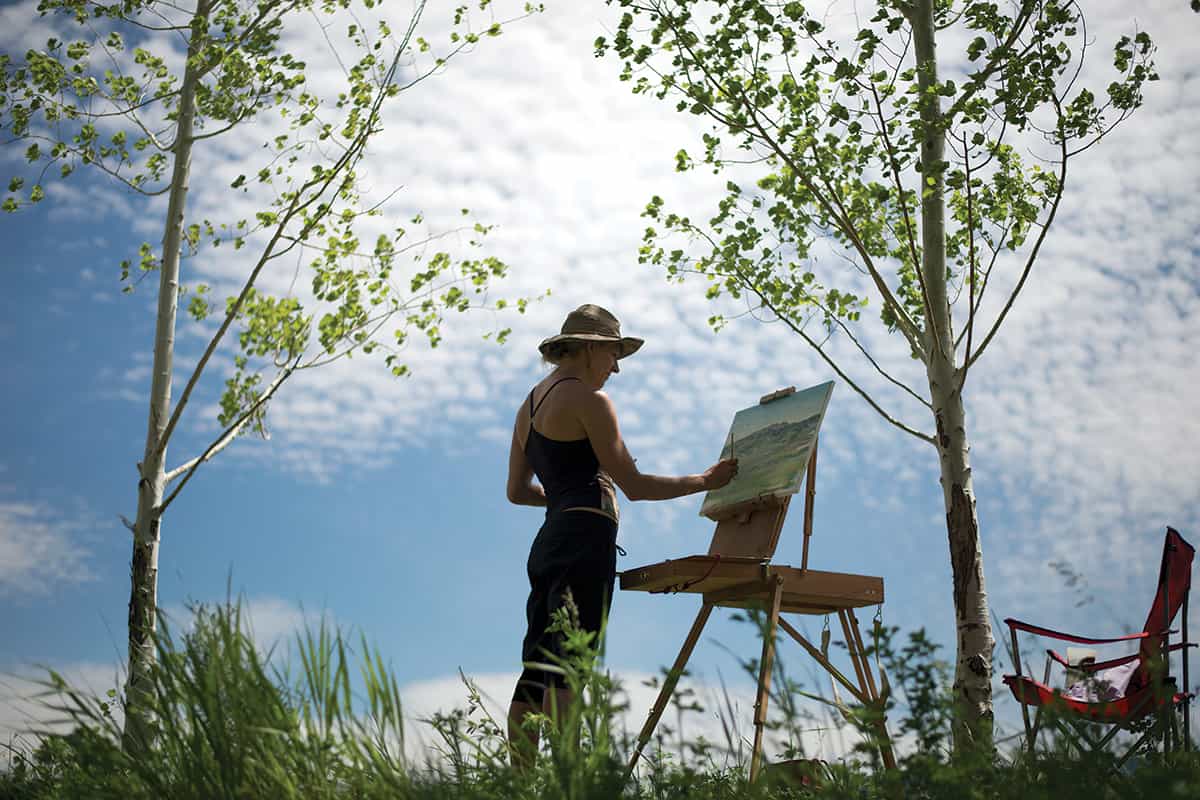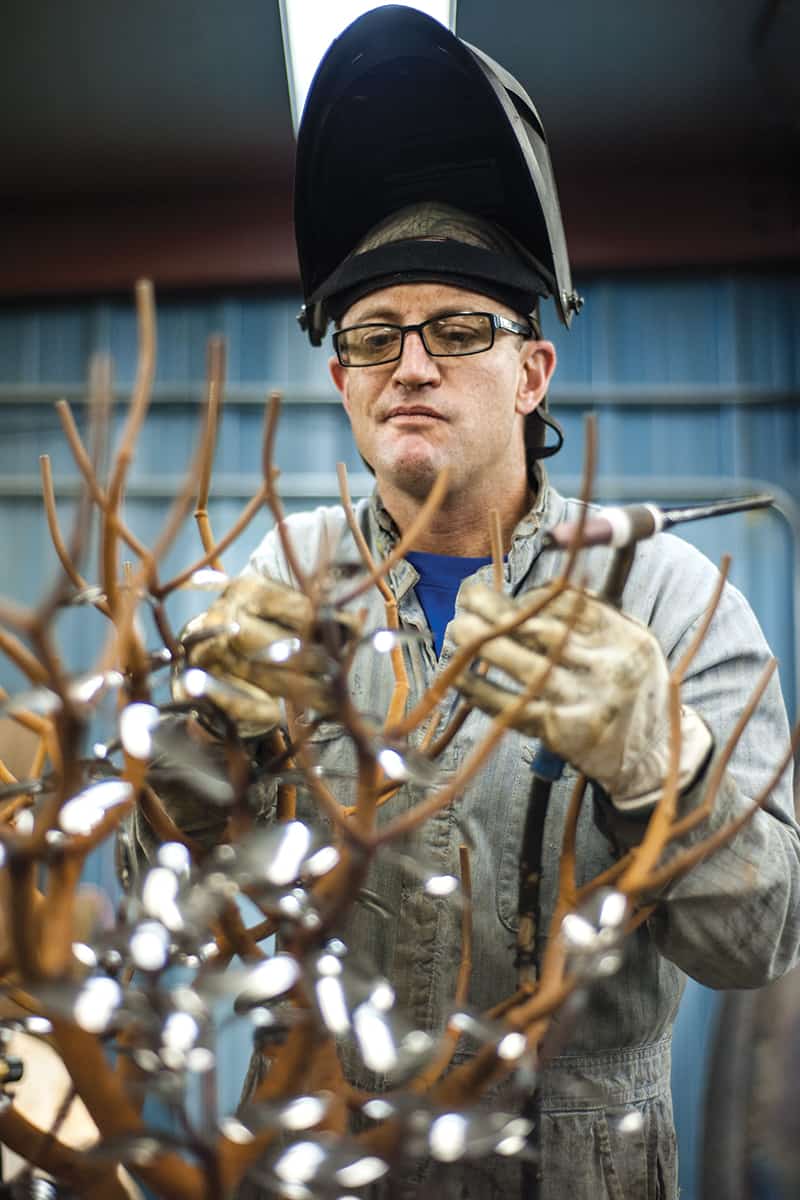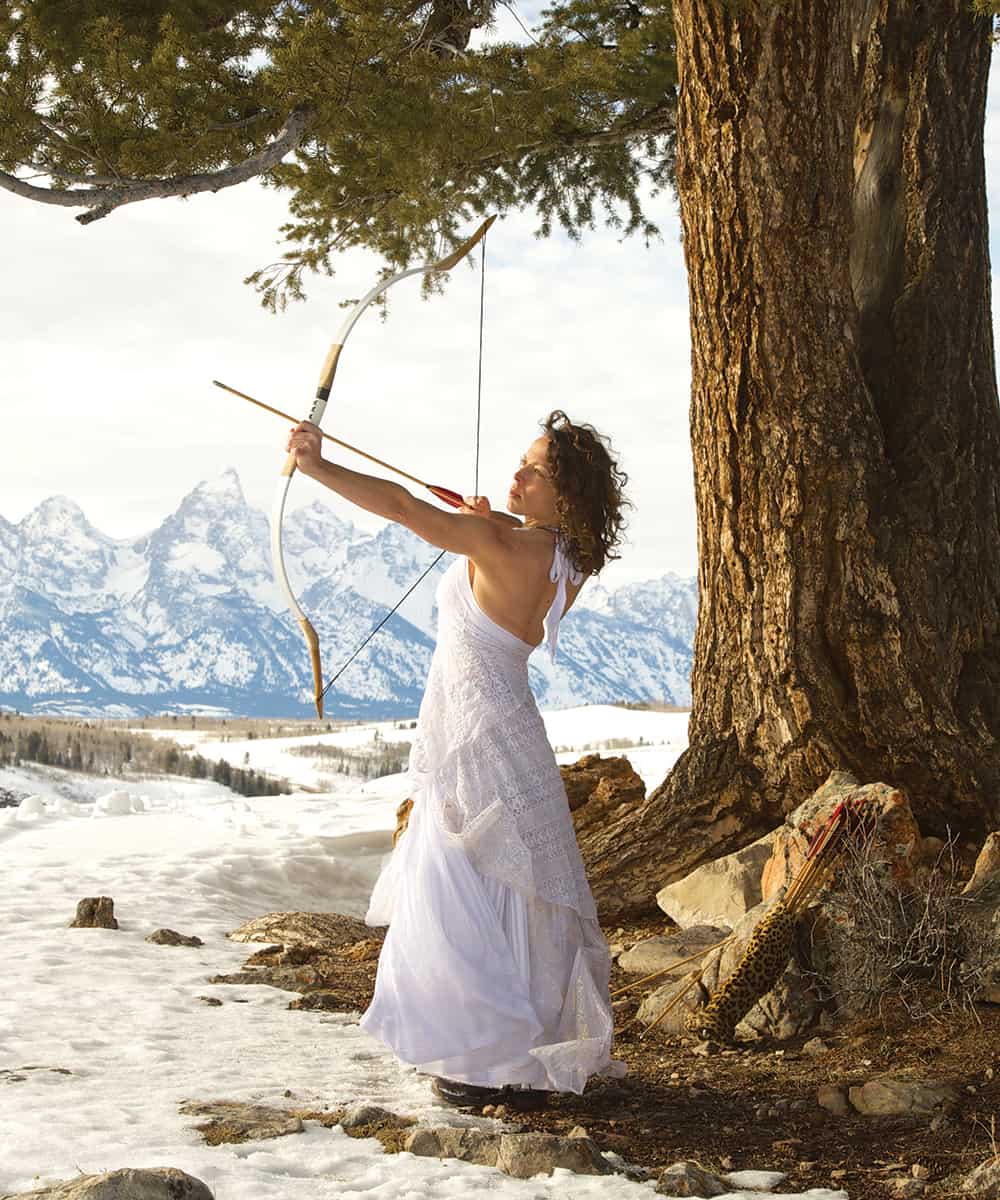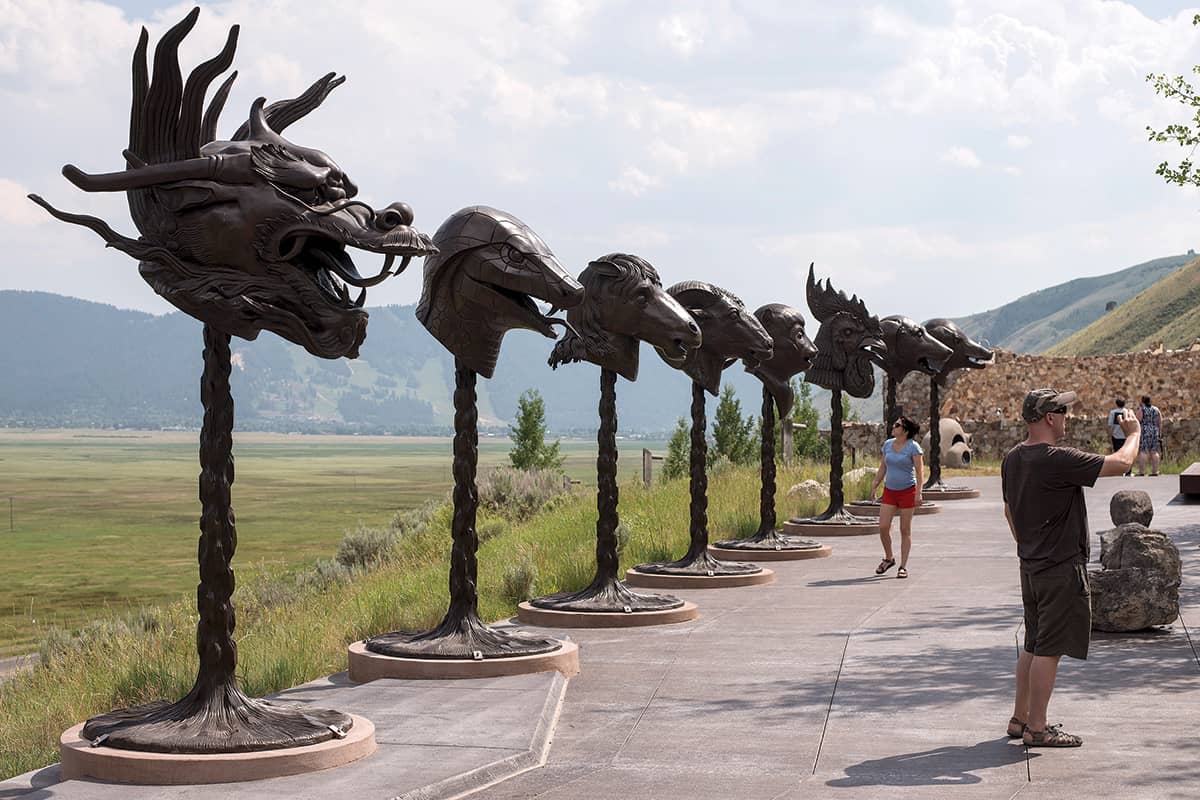Read The
Current Issue
Teton Inspiration
This valley brings out creativity.
By Julie Fustanio Kling
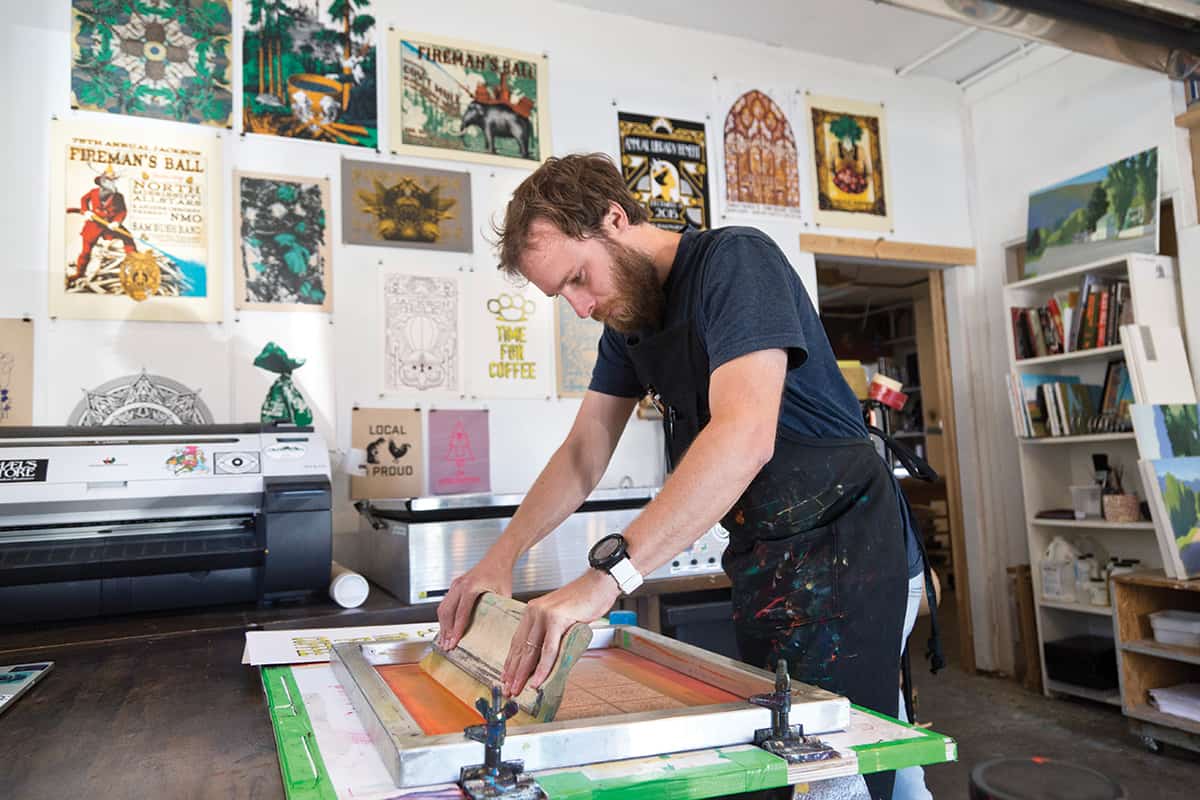
THE LIGHT FROM the torch that Ben Roth used to weld the sheet metal adorning the interior of the restaurant Terroir (now Trio: An American Bistro) had a lasting impression. The renovations he was doing in 1998 felt so natural that Roth was taken back to a sculpture class he took as an undergrad at the University of Nevada. “Maybe I am an artist,” he thought, before recalling the creative block he’d had in the second—and last—art class he ever took. He returned to the work at hand.
Terroir, which closed a few years later, offered a fine dining experience that was ahead of its time, says Roth, who was a partner in the enterprise. But the remodel work he did to transform the space ignited a creative spark in him that changed the trajectory of his life. Roth has taught himself to work in mediums as diverse as metal and plaster, leading him to a rewarding career as a full-time artist and sculptor.
Whether it’s passion, persistence, the thrill of the adventure, sheer luck, or an otherworldly compulsion to capture the magic of this place—or all of the above—Jackson Hole has inspired creativity in its visitors since it was settled in the late nineteenth century. This is true both for those formally trained in visual arts and the self-taught. Archie Boyd Teater (1901–1978), one of the best-known Western landscape impressionist painters, never finished the eighth grade. In Jackson Hole he repaired fences for ranchers and used the weathered tops of wooden posts for carving. Teater propped canvases on trees next to his campsite on Jenny Lake. A lumberjack bought his first painting for fifty cents.
One of the most prodigious painters of his generation, Teater considered himself a loner who belonged to no specific school. But he did pay for art lessons at the Portland Art Museum with money he earned by trapping mink and muskrat, and he went on to paint in Europe and elsewhere in the world. Teater always came back to Jackson Hole, though, where he earned the nickname Teton Teater.
TODAY, TEATER’S WORK is in the Metropolitan Museum of Art, among other museums, and Jackson Hole boasts one of the most vibrant art scenes in the nation, with a major wildlife art museum, a generous and expansive nonprofit art community, and more art galleries per capita than almost any other community. Recent shows at the National Museum of Wildlife Art include Chinese sculptor Ai Weiwei’s Zodiac series, National Geographic photographer Joel Sartore’s Photo Ark, and Andy Warhol’s Endangered Species, which are in the museum’s permanent collection.
This kind of prestige can make Jackson Hole intimidating for artists like Emily Boespflug, an art teacher who grew up in Sheridan, Wyoming, moved to Jackson in 2004, and only built up the confidence to call herself a plein air painter around 2014. “Now I can’t even see colors right without starting a painting outside,” she says, adding that she is “somewhat in the middle” of being a self-taught artist and a scholar.
A graduate of the University of Wyoming with degrees in fine art and psychology, Boespflug surrounded herself with local artists she admires, while teaching and developing programs for the Art Association of Jackson Hole. When her friend, Katy Ann Fox, a Jackson painter who earned a Master of Fine Art from San Francisco’s Academy of Art University, invited her to a plein air art contest in Bryce Canyon, Utah, which Boespflug won, she was hooked. Now she is slowly moving away from her jobs as a teacher and program developer at the Art Association and building up her portfolio for art fairs and pop-up shows around town. “Hopefully I can get into the art zone 100 percent,” she says. “As far as [being] an artist I haven’t even begun to go where I want to go.”
Also still figuring out where he wants to go with his art is Roth, who left the hospitality industry and officially began his art career in 2001, albeit with a spate of unfortunate timing. Roth’s first show was scheduled for September 11, 2001. His second exhibition, at Rare Gallery, was a week after the banking collapse of 2008. From these experiences, he learned to persevere. He named a more recent show of his work 10,000 Hours, referencing Malcolm Gladwell’s book Outliers, which touts how experience can make you world class in any field. “Jackson rewards hard-working artists if you go for it and put your all into it,” Roth says, adding that he’s been so prolific because of the pressure to survive here. “I do think that being hungry makes for good art.”
BEING AN ARTIST in Jackson is a double-edged sword: It is a small community and there are a lot of people who support the arts, but it is expensive to live here. “I definitely benefit from living here,” Roth says. “I’ve gotten hired for commissions in line at the grocery store. If I was working in Denver [where he grew up] I might have thrown in the towel.”
Nonprofits like Teton Artlab, JH Public Art, the Art Association, and the Center of Wonder—which empowers artists to take risks and contribute to the local arts culture—offer residencies and grants to work in Jackson. These opportunities inspire local artists to raise their game. “We don’t have access to ongoing education and development and we don’t have a university, but we are the only arts community with two national parks in our backyard,” says Lyndsay Rowan McCandless, executive director of the Center of Wonder. “Many self-taught artists end up figuring it out themselves because we’re so secluded. They feel a palpable energy here that attracts risk takers, and when visiting artists come and fall in love with this place, the artists who live here are reminded of why they are here.”
Fox, the artist who got Boespflug to enter her first plein air contest, grew up in Idaho, like Teater. In 2015 she was voted “artist of the year” by the Art Association. Fox says no matter what their training, artists in Jackson are all in the same field with the same resources and the same challenges. “Nature’s always going to do a better job than we ever can,” she says.
Jacqueline Ra, a self-taught photographer who lives a quiet life on the edge of Grand Teton National Park, agrees. She arrived in the valley in 2003, and her first photos were of sunrises and birds in flight taken “with a broken camera.” She has since graduated to images of newborn elk and of foxes with prey in their mouths, some of which she took right outside the windows of her cabin. “I go for weeks without interacting with people,” Ra says, “and in that emptiness, beautiful things show up. The Tetons have stunning lighting. Something about the atmosphere, the clean air, makes light quality really nice.”
It’s more than the physical for Ra, though. “There’s an element of magic with photography spirits who help arrange things for me.” she says. “Sending animals to say ‘hi.’ It’s an authentic record of what it’s like to live in an isolated field.”
Many local artists agree it is a combination of the relationship between animals and humans, the extreme energy of this place, and the robust art community that cause Jackson to inspire visual creativity. For Roth, his art is adventurous, humorous, and sometimes risky. He’s made furniture from recycled materials like spoons and bike chains. Last year, he carved chain link sections out of an intact tree that he sculpted into a bench and draped over a fence along the Wilson bike path.
“My art comes from my concern for the environment and the relationship between humans and nature,” Roth says. “I don’t want to bang people over the head with a message. I want them to reach their own conclusion. Sometimes being adventurous means the outcome is uncertain, but interesting art gets made when you are adventurous.”
And Jackson Hole does nothing if not inspire adventurousness.
